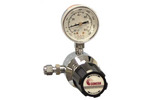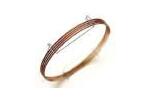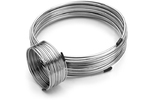Home
- ▶
- Heaters/Source
- ▶
- Agilent Heaters and SensorsMass Spectrometry, Scientific Supplies & ManufacturingScientific Instrument Services 5973 Source Heater Tamper Resistant Allen Wrench 5973/5975 Quad Sensor 5985 Source Heater Assembly Agilent Interface Heater Assembly 5971 Interface Heater

- ▶
- Reference Material on InstrumentationArticle - A High Temperature Direct Probe for a Mass Spectrometer Design of a Direct Exposure Probe and Controller for use ona Hewlett-Packard 5989 Mass Spectrometer SIS AP1000 AutoProbe™ SIS AP2000 AutoProbe™ - Description of System HPP7: Direct Probe Electronics Console HPP7: Direct Probe for the Agilent (HP) 5973/5975 MSD HPP7: HP Direct Probe Application Notes HPP7: Installation Directions for the Direct Probe HPP7: Side Cover for the HP 5973 MSD HPP7: Support HPP7: Probe Inlet System for the Agilent (HP) 5973 and 5975 MSD with Automatic Indexed Stops HPP7: Theory of Operation of the Direct Probe and Probe Inlet System Direct Thermal Extraction Thermal Desorption Application Notes Environmental Thermal Desorption Application Notes Food Science Thermal Desorption Application Notes Forensic Thermal Desorption Application Notes GC Cryo-Trap Application Notes Headspace Application Notes Purge & Trap Thermal Desorption Application Notes Theory of Operation of the AutoDesorb® System AutoDesorb Notes for SIS Dealers Adsorbent Resin Application Notes Installation of the Short Path Thermal Desorption System on Agilent (HP) and Other GCs Installation of the Short Path Thermal Desorption System on a Varian 3400 GC AutoDesorb® System Development Team Thermal Desorption Applications and Reference Materials Installation of the Short Path Thermal Desorption System - TD5 Part I - Design & Operation of the Short Path ThermalDesorption System Installation Instructions for the Model 951 GC Cryo-Trap on the HP 5890 Series GC Installation Instructions for the Model 961 GC Cryo-Trap on the HP 5890 Series GC Operation of the Model 951/961 GC Cryo-Trap SIS GC Cryo Traps - Theory of Operation NIST/EPA/NIH Mass Spectral Enhancements - 1998 version (NIST98) SIMION 3D Ion Optics Class Mass Spectrometer Source Cleaning Methods MS Tip: Mass Spectrometer Source Cleaning Procedures Mass Spec Source Cleaning Procedures Micro-Mesh® Abrasive Sheets Research Papers Using New Era Syringe Pump Systems EI Positive Ion Spectra for Perfluorokerosene (PFK) Cap Liner Information How do I convert between fluid oz and milliliters? Which bottle material should I choose? Which bottle mouth should I choose? The Bottle Selection Guide CGA Connections for Gas Tanks Chemical Reaction Interface Mass Spectrometry (CRIMS)

- Instrument Tubing
- ▶
- Gas RegulatorsModel 3530 Series - Single Stage Purity Brass Regulator Model 3510 Series - Single Stage High Purity Stainless Steel Regulators Model 3120 Series - Dual Stage Purity Brass Regulator Model 3810 Series - Dual Stage High Purity Stainless Steel Regulators Tescom Gas Line Regulators 3420 Series Tescom Gas Line Regulators 3450 Series Concoa In-Line Regulators Model 304 Series Concoa In-Line Regulators Model 324 Series

- ▶
- GCColumns Fused Silica Tubing Instrument Tubing Injection Port Liners Septa by Manufacturer SIS GC Cryo-Traps Ferrules Valves Swagelok® Fittings Pyrolysis Probe Accessories Gas Generators Gas Regulators Gas Purifiers and Filters Syringes SGE MEPS™-Micro Extraction by Packed Sorbent Purge and Trap System SGE SilFlow™ Stainless Steel Micro-Fluidic Platform Accessories NIST GC RI Library Other GC Supplies Catalog Page D1

- LiteratureApplication Notes Adsorbent Resins Guide Mass Spec Tips SDS Sheets FAQ MS Calibration Compound Spectra Manuals MS Links/Labs/ Organizations MS Online Tools Flyers on Products/Services Scientific Supplies Catalog About Us NextAdvance Bullet Blender® Homogenizer Protocols Micro-Mesh® Literature Instrumentation Literature Agilent GC/MS Literature SIS News / E-Mail Newsletter NIST MS Database - Update Notifications

- ▶
- CGA Connections for Gas Tanks (This Page)
The below list is a compilation of CGA fittings for gas tanks in common use by both Matheson and Scott Speciality Gases. These are the standard fittings used by most gas suppliers. However, be sure to check with your gas supplier for the correct fittings for your tanks.
| Gas | CGA Fitting | |
| Scott | Matheson | |
| Acetylene | 510 | 510 |
| Air | 590 | 590 |
| Air, Breathing | 346 | |
| Allene | 510 | 510 |
| Ammonia, Anhydrous | 240, 260 | 705 |
| Ammonia, Electronic | 660, 720 | |
| Argon | 580 | 580, 718 |
| Argon-3500 psi | 680 | |
| Argon-6000 psi | 677 | |
| Arsine | 350 | 350, 632 |
| Boron Trichloride | 660, 634 | |
| Boron Trifluoride | 330, 642 | |
| Bromotrifluoromethane | 660 | |
| 1,3-Butadiene | 510 | 510 |
| Butane | 510 | 510 |
| Butenes | 510 | 510 |
| Carbon Dioxide | 320 | 320, 716 |
| Carbon Monoxide | 350 | 350, 724 |
| Carbonyl Fluoride | 660 | 660 |
| Carbonyl Sulfide | 330 | 330 |
| Chlorine | 660 | 660 |
| Chlorodifluoromethane | 660 | 660 |
| Chloro-1,1-difluoroethane | 510 | |
| Chloropentafluoroethane | 660 | |
| Chlorotrifluoroethylene | 510 | |
| Chlorotrifluoromethane | 660 | 660, 716 |
| Cyanogen | 660 | 660 |
| Cyanogen Chloride | 660 | |
| Cyclopropane | 510 | 510 |
| Deuterium | 350 | 350 |
| Dichlorodifluoromethane | 660 | 660, 716 |
| Dichlorosilane | 678, 636 | |
| Dichlorotetrafluoroethane | 660 | |
| Dimethylamine | 240 | 705 |
| Dimethyl Ether | 510 | 510 |
| 2-2 Dimethylpropane | 510 | |
| Ethane | 350 | 350 |
| Ethyl Acetylene | 510 | |
| Ethyl Chloride | 510 | 300 |
| Ethylene | 350 | 350 |
| Ethylene Oxide | 510 | 510 |
| Fluorine | 679 | 679 |
| Fluoroform | 680, 716 | |
| Germane | 350 | 350, 632 |
| Helium | 580 | 580, 718 |
| Hexafluoroethane | 660 | |
| Hexafluoropropylene | 660 | |
| Hydrogen | 350 | 350, 724 |
| Hydrogen-3500 psi | 695 | |
| Hydrogen Bromide | 330 | 330, 634 |
| Hydrogen Chloride | 330 | 330, 634 |
| Hydrogen Fluoride | 660 | 660, 638 |
| Hydrogen Iodide | 330 | |
| Hydrogen Selenide | 350, 660 | 350 |
| Hydrogen Sulfide | 330 | 330, 722 |
| Iso-Butane | 510 | 510 |
| Iso-Butylene | 510 | 510 |
| Krypton | 580 | 580, 718 |
| Methane | 350 | 350 |
| Methyl Bromide | 330 | |
| 3-Methyl Butene-1 | 510 | |
| Methyl Chloride | 660 | 660 |
| Methyl Fluoride | 350 | |
| Methyl Mercaptan | 330 | 330 |
| Monoethylamine | 240 | |
| Monomethylamine | 240 | 705 |
| Natural Gas | 350 | |
| Neon | 580 | 580, 718 |
| Nitric Oxide | 660 | 660, 712 |
| Nitrogen | 580 | 580, 718 |
| Nitrogen-3500 psi | 680 | |
| Nitrogen-6000 psi | 677 | |
| Nitrogen Dioxide | 660 | 660 |
| Nitrogen Trioxide | 660 | 660 |
| Nitrosyl Chloride | 660 | |
| Nitrous Oxide | 326 | 326 |
| Octofluorocyclobutane | 660 | |
| Oxygen | 540 | 540, 714 |
| Perfluoropropane | 660, 716 | |
| Phosgene | 660 | 660 |
| Phosphine | 350 | 350, 632 |
| Phosphorous Pentafluoride | 330 | 660 |
| Propane | 510 | 510 |
| Propylene | 510 | 510 |
| Silane | 350 | 350, 632 |
| Silicon Tetrafluoride | 330 | 330, 642 |
| Sulfur Dioxide | 660 | 660 |
| Sulfur Hexafluoride | 590 | 590, 716 |
| Sulfur Tetrafluoride | 330 | 330 |
| Tetrafluoromethane | 580 | |
| Trimethylamine | 240 | 705 |
| Vinyl Bromide | 510 | 510 |
| Vinyl Chloride | 510 | |
| Vinyl Methyl Ether | 510 | |
| Xenon | 580 | 580, 718 |
Source of Information:
- Matheson Gases and Equipment Catalog,
- Scott Speciality Gases Catalog


